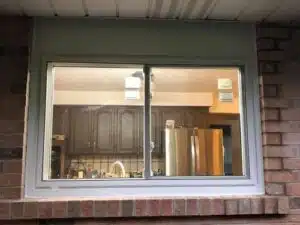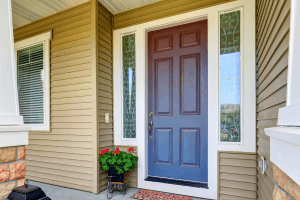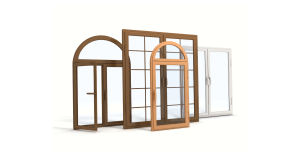Canglow has been providing Alberta with the world’s most advanced residential windows for 20 years. Canglow’s innovative replacement windows, patio doors and window walls can add style and performance to any home. Add style and performance to any home with Canglow’s innovative replacement windows, patio doors and window walls. This blog provides the information and inspiration consumers need to make informed decisions about window replacement.
With energy awareness increasing year on year, energy efficient windows are becoming increasingly popular, and for good reason. This article tells you why you should choose energy efficient windows and how to find out which ones are really energy efficient. It explains seemingly complex terms such as ‘Low-E coating’, ‘U-factor’ and ‘solar heat gain’ and explains how they can be used to help you find energy efficient windows.
Keep reading to learn everything you need to know about getting energy efficient replacement windows in Canada in 2024.
How Will an Energy Efficient Window Benefit You?
Here are some ways that you as a homeowner will directly benefit from your decision to go the environmentally-friendly route.
-
Lower heating and cooling costs
The most energy efficient windows are estimated to reduce electricity bills by up to $340 per year. This translates to savings of up to $10,200 when applied over a 30-year period before replacement is required!
-
Canada Greener Homes Grant eligibility
For those who don’t know, home renovations that improve the energy efficiency of a home can qualify for a grant of up to $5,000 from the government; for larger projects between $5,000 and $40,000, the Canada Green Homes Loan can also be considered. This loan is interest-free and is repaid over 10 years.
Learn More About the Canada Greener Homes Grant>>
-
More natural light
Ideally, new windows should let in as much natural light as possible. Fixed curtains, bulky window frames and too much glass can block the amount of natural light entering the home. Features such as retractable screens, bespoke glazing and thin (but durable) frames can reduce the amount of light lost without compromising insulation.
-
Reduced condensation on windows
Many homeowners are unaware that fogging on windows is a sign of inefficiency. Condensation can obstruct the view and, in some cases, cause mold to grow on the windows. If condensation appears between the panes, the integrity of the window seal is compromised and water vapor is entering between the panes.
-
Increased comfort
The energy efficiency of replacement windows can protect your home from the harsh winter temperatures familiar to all Alberta residents. Instead of sitting by the window and enduring uncomfortable drafts, efficient window replacement gives you complete control over your home’s temperature at all times.
Qualities of Energy-Efficient Windows
Here are some things to consider when choosing energy-efficient windows:
1. The Glass
The ideal energy-efficient window is tailored to the needs of each home. Here are some features you should examine to find the right window glass for you.
-
Low-E coating
Low-E (or low-emissivity) coatings are transparent, ultra-thin coatings applied to window glass to help regulate the passage of solar radiation. These coatings need to be tailored to the specific needs of different regions and climates.
In Alberta, where the weather is highly variable throughout the year, a balanced Low-E formula like Climagard 70/36 is ideal. It is designed to take advantage of the sun’s heat in the winter and keep it out in the summer.
-
Insulated Window Filling
Insulating window materials (e.g. gas-filled) can help improve a window’s U-factor (an index of energy efficiency that shows how well a window can insulate and retain heat in a home). In the most energy efficient windows, the spaces between the panes are filled with heavy gases. These gases help the unit resist air movement and retain heat.
-
Warm Edge Window Spacers
With changing seasons and fluctuating temperatures, windows are at risk of expansion and contraction. As a result, seal failures are alarmingly common in cheap and outdated windows.
Warm Edge Matting insulates the edges of the window and holds the glass tightly apart. It expands and contracts as the glass moves, preventing gases from escaping. This airtight seal also prevents heat loss, air leakage and condensation inside the window glass.
2. The Frame
The most common materials used for window frames are vinyl, aluminum, wood and fiberglass. Each has its own advantages and disadvantages. When choosing window frames, new customers often opt for vinyl. The disadvantages are that they lack strength, rigidity and durability and are susceptible to wear and expansion and contraction due to Alberta’s changing temperatures. As a result, vinyl frames have a significantly shorter lifespan.
Canglow takes a different approach to window frames, combining the insulating advantages of vinyl with the strength and durability of aluminum to create a frame that prioritizes long-term airtightness.
Canglow’s hybrid frames are composed of a stainless steel and anodized aluminum skeleton that creates a stronger and more stable frame, providing reinforcement that vinyl shells lack. In this way, the advantages of vinyl can be offered without the disadvantages. You will also enjoy a thermally efficient frame that is easy to maintain season after season.
3. The Screen
“What do insect screens have to do with energy efficiency?” You may wonder. The answer may surprise you. Traditional fixed screens on cheap windows usually work well when they are needed. But when they are not needed, they do nothing but collect dirt and block the view and natural light sources.
Canglow retractable screens offer an innovative solution. They extend the lifespan of the screen and provide a free view of the outdoors. This also improves the visible transmittance (VT) of the unit – VT is an important energy efficiency indicator that shows the amount of light passing through the glass.
How is a Window’s Energy Efficiency Rated in Canada?
When measuring the energy efficiency of windows, various indicators are taken into account. These include the aforementioned U-factor, solar heat gain coefficient (SHGC), visible transmittance (VT) and air leakage. Each indicator is weighted and placed into an equation that specifically ranks how efficient the window is.
There are two main groups that rate window energy efficiency in Canada: The National Fenestration Rating Council (NFRC) and the Canadian Window Energy Rating (CWER).
-
The National Fenestration Rating Council
The National Fenestration Rating Council (NFRC) is the authoritative trade association for comprehensive comparisons of energy efficient windows The NFRC provides standardized ratings in four basic categories of energy performance. These ratings are consistent in giving accurate efficiency ratings while taking into account different local climates.
-
Canada’s Window Energy Rating
Both companies use the same criteria to calculate efficiency, but the NFRC uses a more reliable formula. The Canadian Window Energy Rating (CWER) was developed by ENERGY STAR® Canada to measure the energy performance of windows. Unfortunately, the formula used by CWER to calculate window efficiency does not account for the extreme seasonal temperature variations known throughout Alberta. Without understanding this assessment, homeowners may be unwittingly purchasing windows that are not ideal for their region, resulting in thousands of dollars of wasted energy over the years.
Energy Efficient Windows: The Investment That Keeps on Giving!
Investing in energy efficient windows now means you are doing yourself a favor in the future. If you have any questions about energy efficient windows, contact one of our representatives today! Let us show you how we can customize our energy-efficient windows and doors to your home’s needs and give your home a complete makeover. Call us today or book an appointment online!
HAVE A QUESTION?


